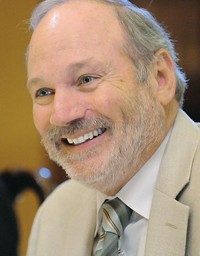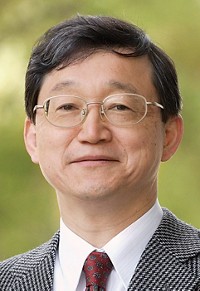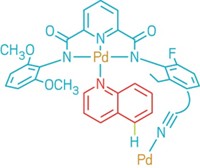Advertisement
Grab your lab coat. Let's get started
Welcome!
Welcome!
Create an account below to get 6 C&EN articles per month, receive newsletters and more - all free.
It seems this is your first time logging in online. Please enter the following information to continue.
As an ACS member you automatically get access to this site. All we need is few more details to create your reading experience.
Not you? Sign in with a different account.
Not you? Sign in with a different account.
ERROR 1
ERROR 1
ERROR 2
ERROR 2
ERROR 2
ERROR 2
ERROR 2
Password and Confirm password must match.
If you have an ACS member number, please enter it here so we can link this account to your membership. (optional)
ERROR 2
ACS values your privacy. By submitting your information, you are gaining access to C&EN and subscribing to our weekly newsletter. We use the information you provide to make your reading experience better, and we will never sell your data to third party members.
Synthesis
Elias J. Corey Award For Outstanding Original Contribution In Organic Synthesis By A Young Investigator
by Sophia L. Cai
January 12, 2015
| A version of this story appeared in
Volume 93, Issue 2
Sponsored by the Pfizer Endowment Fund
By his colleagues’ accounts, Jin-Quan Yu, 48, is the generational leader in the field of C–H activation and subsequent functionalization.
“If there is a genius in this most exciting field of synthesis,” writes his former colleague K. C. Nicolaou, now of Rice University, “it is Yu.”
“He is extraordinarily creative, remarkably prolific, fearless in his choice of problems to take on, and has a fabulous sense of what problems are worth addressing and solving,” adds Dale L. Boger of Scripps Research Institute, in La Jolla, Calif., where Yu is the Frank & Bertha Hupp Professor of Chemistry.
The problems Yu has deemed worthy of solving are many, and his contributions have helped shape the budding field, continues Boger. He has led the charge on developing new practical catalysts, designing special ligands to achieve palladium-catalyzed functionalization of aryl and alkyl C–H bonds, and has introduced the concept of weak coordination to C–H functionalization reactions.
In Yu’s eyes, his most significant contribution thus far has been pioneering the use of two types of ligands—mono-protected amino acid ligands and pyridine-based ligands—to accelerate C–H activation and achieve both enantioselectivity and positional selectivity.
He shares credit for his breakthroughs with his colleagues and students, but he also attributes much of his success to his teachers and educational opportunities: a terrific high school chemistry teacher; an inspiring organic chemistry lecturer at East China Normal University, Shanghai, where he earned a B.S. in chemistry in 1987; a thesis project at the Shanghai Institute of Organic Chemistry in 1987; an M.S. in organic chemistry from the Guangzhou Institute of Chemistry in 1990; and a supportive Ph.D. mentor at Cambridge University, in England, where he earned a Ph.D. in organic chemistry in 1999.
“But I was totally absorbed by the synthetic potential of C–H activation during my postdoctoral training at Harvard,” says Yu, of his research under the direction of E. J. Corey, professor emeritus at Harvard University and the namesake of this award. This inspiration led him to start a project at Cambridge in 2002 to develop asymmetric C–H activation reactions of aliphatic acids and amines, which he has continued to focus on throughout his independent academic career.
Yu, who moved to Scripps in 2007, currently studies remote C–H functionalization and new approaches to achieve enantioselective C–H activation.
“It’s a double-edged sword,” he says. “You have so many C–H bonds, so the opportunity to modify molecules at different sites is unprecedented.” On the other hand, until now, researchers have mainly been able to cut the bonds closest to the existing functional groups. “But the future lies in the distant ones,” Yu says. His group has made progress using “U-shaped templates” that use stereochemistry to affect proximity of bonds to the functional group, as well as by using a soon-to-be-published “relay” method.
Pushing the C–H activation envelope has led Yu to collaborate with scientists at pharmaceutical companies on drug discovery research, as well as synthetic chemists at the National Science Foundation’s Center for Selective C–H Functionalization. “Once chemistry hits a certain stage, it’s important to push applications,” he says. “These collaborations demonstrate the potential of C–H activation technologies and, more importantly, point to numerous challenges that remain to be solved.”
Yu will present his award address before the Division of Organic Chemistry.






Join the conversation
Contact the reporter
Submit a Letter to the Editor for publication
Engage with us on Twitter